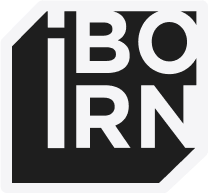In many teams, QA is measured by activity, number of test cases executed, bugs logged or automation coverage achieved. While these metrics show effort, they don’t always show impact. Testing can look productive on paper, yet still leave room for product issues, unclear priorities or misalignment with business goals. QA teams often end up asking themselves: Are we really testing what matters? That’s where implementing the Objective Key Results framework in QA makes a difference. This approach helps testing teams move beyond routine metrics and connect their work directly to organizational goals.
From Output to Outcome: Rethinking QA Goals
The OKR framework for testing teams brings a shift from measuring what we do to measuring what we achieve. Instead of focusing on volume, like the number of tests executed, OKRs help QA teams define clear, outcome based goals that align with product and development priorities. For example:
- Instead of “Increase automation coverage”, set “Reduce test cycle time by 25% while maintaining release stability”.
- Instead of “Run more regression tests”, set “Lower critical bug rate in production by 30%”.
This outcome focused QA strategy allows testing teams to prioritize efforts that create real business impact, not just busyness.
How to Set QA Goals Using OKRs
Implementing OKRs effectively starts with clarity. Each QA objective should answer why it matters, while each key result should measure how you’ll know you succeeded. Here’s a simple structure to start applying goal setting in software testing:
- Objective: Define the purpose behind your QA effort.
Example: Strengthen product reliability for end users. - Key Results: Define how success will be measured.
Example 1: Reduce escaped defects in production by 40%.
Example 2: Improve test pass rate for critical user flows to 95%.
These kinds of QA performance measurement goals make quality assurance visible, measurable and aligned with broader company objectives.
What It Means for Our Clients
For our clients, this approach ensures that every technical effort in QA translates into clear, measurable deliverables. Instead of abstract testing metrics, progress is defined by tangible results, faster releases, improved product reliability, and reduced risks in production. Complex quality processes become understandable goals that connect directly to business priorities. This clarity helps clients see how technical quality translates into performance, stability, and customer satisfaction, turning QA outcomes into meaningful business value.
The Benefits: How OKRs Improve QA Efficiency
Teams that apply OKRs in QA often see measurable improvements in focus and collaboration.
- Clarity of purpose – Everyone understands what “quality” means in this product cycle.
- Alignment – QA, development and product teams pursue the same measurable goals.
- Continuous improvement – Regular OKR reviews drive reflection and smarter prioritization.
- Efficiency gains – QA focuses on what delivers the most impact instead of spreading effort thin.
By applying this data driven software testing approach, quality becomes not just a validation step, but a continuous contributor to product and business success.
The Takeaway: Quality That Moves the Business Forward
Quality assurance has the power to do more than verify releases, it can actively shape how the product succeeds. When you set QA goals with OKRs, you transform testing into a results oriented, collaborative process. It’s a shift from activity based validation to outcome based impact. That’s how modern teams implement OKRs in QA to build better products, deliver faster and make quality a shared responsibility across the organization.







